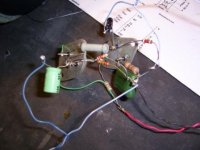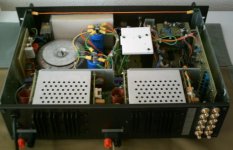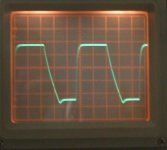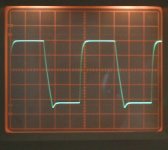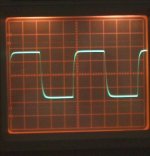This is a very good thing to do..this guy will learn a lot
In a couple of years you will not recognize this man.
Do things folks..hold your soldering iron and build!
regards,
Carlos
In a couple of years you will not recognize this man.
Do things folks..hold your soldering iron and build!
regards,
Carlos
Mooly said:You did ask.
Looks like my first prototype...
Attachments
BC107 no suffix 🙂 The bandwidth of the circuit is really limited by the devices used and stray capacitance, it has no properly defined roll off or "dominant pole" in the design. I think it should have really -- but thats for another day.
Re: This is a very good thing to do..this guy will learn a lot
"O edifício prático ajuda certamente"
Indeed yes. I always tried to wrap my mind around the idea of how an amplifier really works but never grasped it. This past few days I learned a lot and continues to do so.
Thank you all for all the help so far!
D
destroyer X said:
In a couple of years you will not recognize this man.
Do things folks..hold your soldering iron and build!
regards,
Carlos
"O edifício prático ajuda certamente"
Indeed yes. I always tried to wrap my mind around the idea of how an amplifier really works but never grasped it. This past few days I learned a lot and continues to do so.
Thank you all for all the help so far!
D
Re: This is a very good thing to do..this guy will learn a lot
Hello Carlos,
You mean my lashup ? or GD's
destroyer X said:
In a couple of years you will not recognize this man.
Do things folks..hold your soldering iron and build!
regards,
Carlos
Hello Carlos,
You mean my lashup ? or GD's
Mooly said:GD Would you still like some info on grounding and layout.
Yes please! 🙂
I also found this article very informative: http://sound.westhost.com/earthing.htm
D
Hello GD,
It's all relevant and good stuff.
I know from years of experience that getting a design hum and noise free to be the biggest challenge.
This is an internal view of my amp -- there a lot of wiring in there but with a correct grounding scheme it is absolutely hum and noise free, even at full gain. You have to treat each and every wire as a potential source of noise and as a potential "resistance" that an unwanted voltage can develop across and therefore be introduced into the amp.
I will try and draw out a few simple pointers for you, but you have to be methodical and attend to each issue.
See what I can come up with.
It's all relevant and good stuff.
I know from years of experience that getting a design hum and noise free to be the biggest challenge.
This is an internal view of my amp -- there a lot of wiring in there but with a correct grounding scheme it is absolutely hum and noise free, even at full gain. You have to treat each and every wire as a potential source of noise and as a potential "resistance" that an unwanted voltage can develop across and therefore be introduced into the amp.
I will try and draw out a few simple pointers for you, but you have to be methodical and attend to each issue.
See what I can come up with.
Attachments
Mooly said:Hello GD,
It's all relevant and good stuff.
I know from years of experience that getting a design hum and noise free to be the biggest challenge.
This is an internal view of my amp -- there a lot of wiring in there but with a correct grounding scheme it is absolutely hum and noise free, even at full gain. You have to treat each and every wire as a potential source of noise and as a potential "resistance" that an unwanted voltage can develop across and therefore be introduced into the amp.
I will try and draw out a few simple pointers for you, but you have to be methodical and attend to each issue.
See what I can come up with.
Wow! That is some amplifier... driving the B&W's I suppose?
D
Hi GD,
It is driving the B&W's 🙂 and very nicely as well. If you want to read a bit more about it have a look at the current thread in the solid state forum "My MosFet Amp designed for music"
Anyway back to yours. I've just to scan some notes before posting them but here some more pics to show how the performance is affected by choice of parts in a design like this.
First up 100Khz with a TIP3055 this is the flatpack 2N3055.
It is driving the B&W's 🙂 and very nicely as well. If you want to read a bit more about it have a look at the current thread in the solid state forum "My MosFet Amp designed for music"
Anyway back to yours. I've just to scan some notes before posting them but here some more pics to show how the performance is affected by choice of parts in a design like this.
First up 100Khz with a TIP3055 this is the flatpack 2N3055.
Attachments
Mooly said:And this one-- hope it makes some sense.
Okay - makes sense...
I'll report soon.
D
I want to know what Sakis thinks of post #112 😀 😀
I did not answer your question on listening impressions. Sorry, simple answer is I have not listened to it. Would have to make two, rig it up, volume control, sockets, move the CD player, rig the PSU up --- you know what it's like. 🙂
I did not answer your question on listening impressions. Sorry, simple answer is I have not listened to it. Would have to make two, rig it up, volume control, sockets, move the CD player, rig the PSU up --- you know what it's like. 🙂
Mooly said:Lets see if this is readable.
Transformers do not saturate because of high secondary current. But the peakier currents you get with bigger caps have another problem - higher RMS to average ratio. The bigger caps used the higher current drawn from the transformer for the same output power.
well .....
choise of parts make hell of a diference ......THIS WHAT I THINK !!!!
wll have to see this again some times later with some other componets ....
mooly you have to tell us two things more
A) whats the first transistors cause they are not bc 550 as stated in the original schematic ......
B) do you produce any noise ???? hum or buzz ???
choise of parts make hell of a diference ......THIS WHAT I THINK !!!!
wll have to see this again some times later with some other componets ....
mooly you have to tell us two things more
A) whats the first transistors cause they are not bc 550 as stated in the original schematic ......
B) do you produce any noise ???? hum or buzz ???
Mooly said:And this will have you guessing. One component removed and one substituted. This is at 100khz.
Mosfet?
Correct 😀. An old BUZ90, together with removing the driver. No gate stopper, WHAT !!! All the tv,s just wiped out for quarter mile. Not me guv.
Sakis -- BC107's those round metal things we all used to play with. Next would have to be to tweak the bias and perhaps use a Germanium front end.
No noise or hum, other than that picked up by it being a lash up. Run off a Farnell laboratory PSU.
It's just a bit of fun on my part, trying to show the effect of various components.
Now not wishing to upset GD, this is his thread, and GD has built this amp to be the "ultimate in headphone listening" and that is what it's all about but think on this.
Lets say you have 30 mw delivered into the headphones per channel. That's a lot. It draws about 3.5 to 4 watts per channel. If we say efficiency is power out/power in that is 30mw/4watts *100 = 0.75% efficiency. That suggests you could easily reduce the current draw which would be very beneficial to reducing ripple on the supply.
What do you think ?
Sakis -- BC107's those round metal things we all used to play with. Next would have to be to tweak the bias and perhaps use a Germanium front end.
No noise or hum, other than that picked up by it being a lash up. Run off a Farnell laboratory PSU.
It's just a bit of fun on my part, trying to show the effect of various components.
Now not wishing to upset GD, this is his thread, and GD has built this amp to be the "ultimate in headphone listening" and that is what it's all about but think on this.
Lets say you have 30 mw delivered into the headphones per channel. That's a lot. It draws about 3.5 to 4 watts per channel. If we say efficiency is power out/power in that is 30mw/4watts *100 = 0.75% efficiency. That suggests you could easily reduce the current draw which would be very beneficial to reducing ripple on the supply.
What do you think ?
- Status
- Not open for further replies.
- Home
- Amplifiers
- Solid State
- Regulated DC PSU - Plain and simple please?
